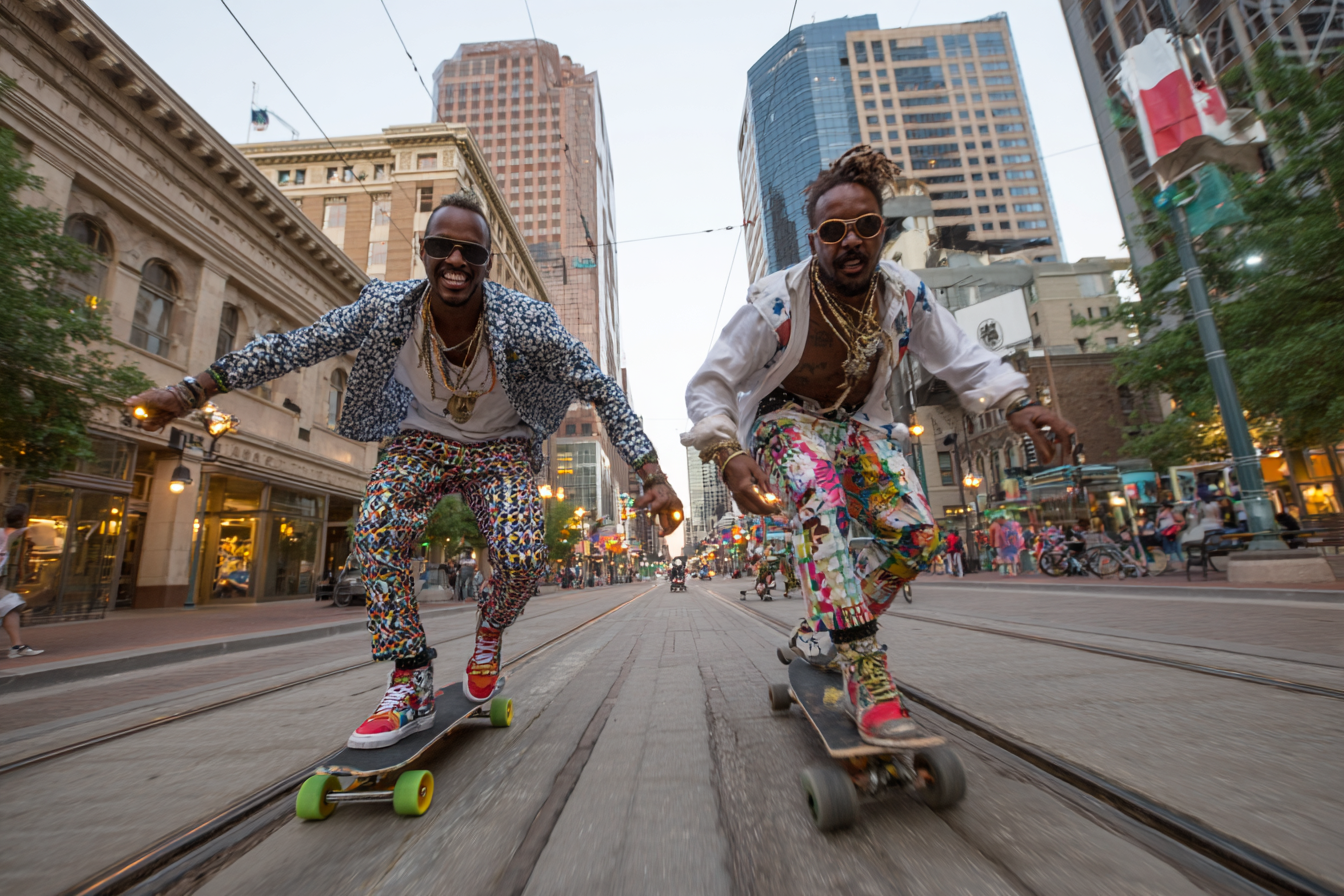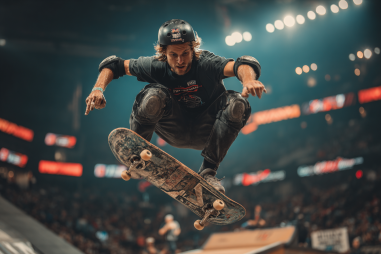Skateboarding culture and fashion have always been inseparable, with the style choices of skaters reflecting far more than just comfort or practical need—they embody a spirit of freedom, rebellion, and unfiltered creativity. Over the decades, what began as underground expressions of personal identity have carved a lasting mark on mainstream fashion trends worldwide. From the baggy jeans and graphic tees of the 70s and 80s to today’s blend of streetwear and skate-inspired apparel, skateboarding fashion continues to influence how people communicate individuality through clothing choices. Let’s dive into this dynamic world where wheels meet style and explore the story and evolution of skateboarding culture fashion.
An Origins Story: Skate Fashion in the 70s and 80s
Skateboarding first emerged as a subculture in the 1970s, when surfers in California began adapting their surf moves to the streets during flat tide days, giving birth to the “sidewalk surfer.” Naturally, their clothing mirrored that blend of casual, laid-back coastal lifestyle and rugged street activity. Early skate fashion prioritized comfort and freedom of movement, favoring loose-fitting jeans, t-shirts, and Vans or Converse sneakers—shoes that could withstand the wear and tear of skate grips and ollies.
In the 1980s, as skateboarding evolved into a rebellious counterculture, fashion elements became bolder. Bright colors, graphic prints, and oversized silhouettes became defining features. Skaters experimented with layering, often pairing flannel shirts over graphic tees or donning baggy pants with branded skate shoes. This era also heralded the importance of self-expression through apparel, laying the foundation for skateboarding’s distinct aesthetic identity.
Iconic Skate Brands and Their Lasting Influence
Key brands have played a monumental role in shaping skateboarding fashion. Companies like Vans, Stüssy, Supreme, Thrasher, and DC Shoes began as niche skate labels but quickly gained cult status far beyond skate parks. Vans, with its durable waffle-soled sneakers, has been a staple in skate culture since the 1970s. Its simple yet functional designs gave skaters the grip and durability they needed, helping cement its legacy as an icon.
Thrasher, primarily known as a skateboarding magazine, became synonymous with skate culture fashion through its instantly recognizable flame logo and bold typography on hoodies and tees. Supreme, founded in 1994, combines skate and streetwear culture, famously collaborating with artists and luxury brands to push the boundaries of skate-inspired fashion.
These brands have not only furnished skateboarders with apparel suited for performance but also crafted a visual shorthand for belonging and identity. Wearing these labels signals authenticity and membership in the global skateboarding community.
Skate Culture’s Impact on Streetwear and Mainstream Fashion
What began in garages and skateparks has increasingly shaped global fashion trends. As skateboarding culture exploded in popularity, its aesthetics seeped into the broader streetwear movement, influencing designers, athletes, and celebrities alike. The loose silhouettes, graphic prints, and signature skate shoes have become staples in wardrobes worldwide.
The impact is clear in several ways:
- Streetwear brands adopting skate elements: Many popular streetwear labels integrate skate motifs, such as oversized fits, bold logos, and rugged sneakers, blending skate and urban fashion.
- High fashion collaborations: Luxury brands like Louis Vuitton and Dior have partnered with skate brands or skaters themselves, highlighting the crossover appeal.
- Pop culture influence: Musicians, actors, and influencers frequently sport skate-influenced outfits, blurring the lines between subculture and mainstream.
This symbiosis between skateboarding and streetwear indicates that skate fashion is more than just functional—it’s become a powerful cultural language communicating youthfulness, resilience, and individuality.
DIY and Personalization: The Heartbeat of Skate Style
DIY culture is essential to skateboarding fashion’s authenticity. Skaters have long used customization to make their gear uniquely theirs, from painting their decks with original graphics to modifying clothes for comfort or personal style. This hands-on approach fosters creativity, personal expression, and independence within the skate community.
On clothing, this might mean:
- Patching jeans or shorts with logos or artwork
- Adding DIY screenprints or iron-ons to t-shirts and jackets
- Experimenting with dye techniques, distressing, or reworking vintage pieces
This ethos of personalization contrasts starkly with corporate fashion’s mass production, emphasizing individuality over conformity. It also reflects skateboarding’s broader values of innovation and nonconformity.
Current Trends in Skateboarding Fashion
While the roots of skateboarding style remain visible, today’s trends blend old-school influences with new ideas. Some of the defining characteristics include:
- Renewed love for vintage and retro: Classic skate logos and retro cuts have made a comeback, inspiring collections that pay homage to the pioneers of skate fashion.
- Nostalgic graphic tees and sweatshirts: Bold prints inspired by 80s and 90s skate culture continue to dominate.
- Inclusive sizing and gender-fluid styles: Reflecting skate culture’s evolving diversity, brands are offering more inclusive, unisex apparel that welcomes all riders.
- Eco-conscious materials and sustainable fashion: More skate brands are adopting ethical manufacturing practices, responding to a growing awareness of environmental issues among skaters.
- Technical and performance fabrics: Innovations in breathable, durable fabrics provide both comfort and style, supporting skateboarders’ physical demands.
Skateboarding fashion today is a vibrant, ever-evolving mix where nostalgia meets innovation and individualism thrives.
Fashion as an Expression of Skateboarding Identity
For skateboarders, clothing is much more than apparel; it’s a vital statement of who they are and what they represent. Skate fashion embodies:
- Freedom: Choices reflect a desire to skate freely, without restriction from restrictive or flashy clothing.
- Rebellion: Many skaters adopt styles that go against mainstream expectations, signaling dissent and individuality.
- Community: Wearing skate brand logos or customized clothing signals belonging and shared values within the skate world.
- Creativity: From custom graphics on boards to DIY adorned jackets, style is an extension of self-expression tied to the creative pulse of skating.
Through these elements, skateboarding fashion is a vibrant form of identity construction—one where appearance isn’t superficial but an embodiment of lifestyle and mindset.
Skate Fashion’s Enduring Cultural Footprint
From its rebellious origins to its current multicultural, inclusive form, skateboarding culture fashion has left an indelible imprint on global style. It has fostered a unique aesthetic that champions individuality, creativity, and a laid-back but confident attitude. Whether through iconic brands, streetwear influence, or endless DIY creativity, skate fashion remains a powerful medium of personal and collective identity.
With skateboarding’s surge into mainstream consciousness—thanks to global competitions, media exposure, and Olympic inclusion—its fashion influence only grows stronger. Yet, despite this global appeal, the core essence remains true: skate fashion will always be about authentic expression on wheels, shaped by the spirit of those who skate freely and boldly.







